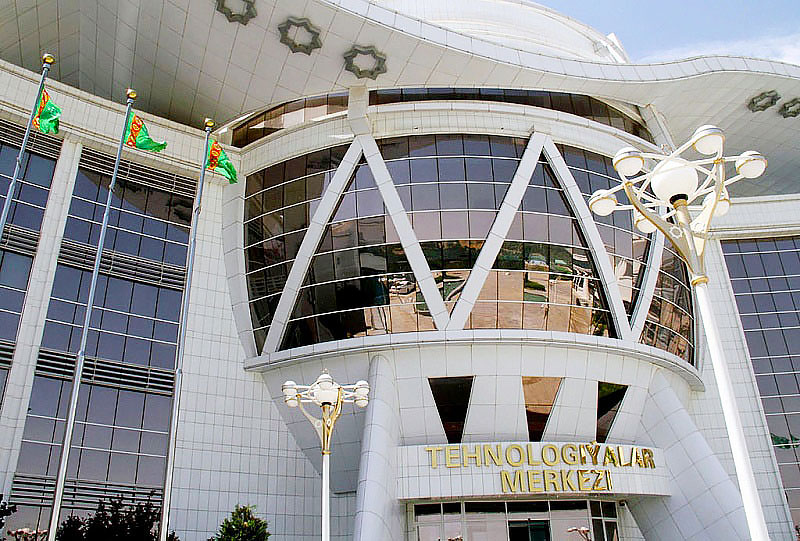One of the main directions of the environmental policy of Turkmenistan will be work on minimizing the negative impact of climate change and industry on the environment and human health, as well as the volume of emissions into the environment. In the future, on a large scale, it is planned to establish and introduce renewable energy sources in our country, including solar panels. In accordance with the Concept for the Development of the «Altyn Asyr» Lake Region for 2019-2025, modern villages and facilities being built in this region will be provided with energy from solar and wind power plants.
The amount of electricity produced makes it possible to satisfy the demand for electricity of the country's economy and for export. In this regard, today in Turkmenistan it is important to develop hydrogen energy producers and the possibility of its processing. The creation of environmentally friendly facilities that produce energy based on the use of solar and wind energy is the task of the direction for the production of hydrogen energy.
Bringing Green Energy to life in Turkmenistan, specialists from the Center for Technology of the Academy of Sciences of Turkmenistan are scientifically developing ways to «extract» a cheap alternative energy source, in particular, «green» hydrogen. This term refers to an environmentally friendly fuel, with which in the future it is possible to replace fossil sources of electrical energy. The object for the experiments will be the water area of the created lake «Altyn asyr». In this work, a unique biocatalyst will be used. By collecting surface water from the Turkmen lake «Altyn Asyr» and adding unicellular algae to it in the established proportion, through the enhancement of the photosynthesis process under the influence of sunlight, hydrogen energy will be obtained in the «Heliobarge» installation.
It is known that in nature, some types of microorganisms and bacteria of blue-green microalgae, under the influence of light, vigorously produce hydrogen. Algae can produce hydrogen from sea water, even from the waste waters of the «Altyn Asyr» Lake.
The process of biological splitting of water, accompanied by the release of hydrogen, is carried out in a closed photo-bioreactor with unicellular green algae. This biohydrogen generation technology is based on the adaptive switching of algal photometabolism in response to non-optimal environmental conditions. In other words, if algae lack oxygen and sulfur, then their photosynthesis processes are drastically weakened. And the rapid production of hydrogen begins.
The main goal of this project is to produce hydrogen based on the cultivation of unicellular algae at the «Heliobarge» plant, with subsequent processing at the «Heliobioplata» plant. Within the framework of this project, an experimental plant «Heliobarge» was lowered to the lake «Altyn Asyr» for the cultivation of unicellular algae. The surface layer of lake water 10-20 cm thick was collected in the required amount and poured into the reservoir. Then, this tank was filled in the required ratio with unicellular algae. Since the surface layer of the lake, pond is the best habitat for various microorganisms and for the intensive cultivation of unicellular algae, starters for unicellular algae, environmental additives and saprophytic bacteria are added to the tank. Due to the fluctuation of water, unicellular algae are constantly in motion, due to which the cultivation intensity of unicellular algae increases. The wind turbine attached to the «Heliobarge» recirculates the movement of water in the reservoir. The temperature of the water is regulated by the temperature of the water area of the lake. And the process of photosynthesis takes place due to daylight sunlight. After four days of pilot testing, samples were obtained from this tank for laboratory analysis and growth of unicellular algae was detected. Unicellular algae are involved in the purification of water in the tank of the «Heliobarge» installation.
As a result of experimental and testing studies of solar plants developed on the basis of renewable energy sources, carried out in the natural environment, the possibility of growing unicellular aquatic plants and further obtaining hydrogen at the «Heliobioplata» plant was substantiated.
The specialized ditches of the «Heliobioplata» are covered with a transparent polyethylene coating along the entire length. The ditches are covered with natural gypsum sand (crumb) for further filling with grown enriched unicellular algae. An air space is formed between the sand and the transparent coating for the accumulation of the released hydrogen by unicellular algae. The accumulated hydrogen is sucked out by means of a compressor unit to a high-pressure storage tank. After obtaining hydrogen, the aqueous natural-gypsum mixture (aquatic calcined algae) is used to restore saline soils with subsequent enrichment of these soils.
In the long term, a transition to alternative energy sources is necessary, since one of the main goals of introducing hydrogen energy is to reduce greenhouse gas emissions. To reduce carbon emissions in manufacturing industries, it is possible to use hydrogen produced using low-carbon technologies. Such sources can be wind energy or solar energy, allowing electrolysis of water. To do this, it is possible to apply technologies for capturing and storing carbon dioxide, as well as water electrolysis, primarily using the energy of hydro-wind and solar energy facilities.








